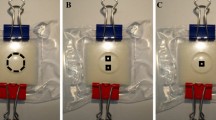Abstract
Populations ofAmblyseius hibisci (Chant), an important predator of citrus red mite,Panonychus citri (McGregor) exhibited varying responses to field applications of cat-tail,Typha latifolia L., pollen in San Joaquin Valley citrus groves. Predator densities increased to significantly higher levels after pollen treatments during the fall months, and to a limited extent after late winter treatments, but not after early spring treatments. The amount of response appeared to be inversely related to the levels of natural foods present during the various seasons. Results of the wind-borne pollen monitoring studies indicated that population growth inA. hibisci was correlated with the seasonal pattern of pollen fallout. Population growth was slowest in years when pollen catches were low during the late winter and early spring, and fastest in years when peak pollen catches occurred in late winter or early spring. Population growth inA. hibisci did not appear to be markedly responsive toP. citri populations although suppression of prey densities was indicated in ca. 50% of the cases. In laboratory tests,A. hibisci reproduced through 3 generations on 11 of 23 pollens tested.
Résumé
Les populations deAmblyseius hibisci (Chant), prédateur important de l'araignée rouge des citrus,Panonychus citri (McGregor) ont des réactions variables à la suite d'applications en champ de pollen du roseau,Typha latifolia L., dans des plantations d'agrumes de la vallée de San Joaquin. Les densités en prédateurs augmentent pour atteindre des niveaux significativement plus élevés qu'à l'origine après des traitements par du pollen en automne, mais d'une façon limitée après des applications en fin d'hiver et restent inchangées après des interventions printanières. Le degré de la réponse est inversement proportionnel aux quantités d'aliments naturels disponibles selon les saisons. Les résultats des essais d'apport de pollen transporté par le vent montrent que la croissance de la population deA. hibisci est en relation avec la répartition saisonnière de l'émission du pollen. La croissance de la population est minimum les années où les prises de pollen sont faibles au cours de la fin de l'hiver et du début du printemps; elle est maximum les années où la plus grande partie des prises de pollen ont lieu en fin d'hiver et début de printemps. L'augmentation des populations deA. hibisci ne paraît pas avoir de répercussions nettes sur les populations deP. citri malgré une réduction des densités en proies dans 50% des cas. En laboratoire,A. hibisci s'est reproduit durant 3 générations avec 11 des 23 pollens étudiés.
Similar content being viewed by others
References
Kapp, R. O. — 1969. How to know Pollen and Spores. —Wm. C. Brown Co. Publ. Dubuque, 249 pp.
Kennett, C. E. & Flaherty, D. L. — 1974. Pest management of citrus red mite on citrus in the southern San Joaquin Valley. —Univ. Calif. Coop. Ext. Serv. Bull., 27 pp.
McMurtry, J. A. — 1969. Biological control of citrus red mite in California. —Proc. I Int. Citrus Symp., 2, 855–862.
McMurtry, J. A., Huffaker, C. B. &Van de Vrie, M. — 1970. Ecology of tetranychid mites and their natural enemies: A review. I. Tetranychid enemies: Their biological characters and the impact of spray practices. —Hilgardia, 40, 331–390.
McMurtry, J. A. &Johnson, H. G. — 1965. Some factors affecting the abundance of the predaceous miteAmblyseius hibisci in southern California [Acarina: Phytoseiidae]. —Ann. Entomol. Soc. Am., 58, 49–56.
— 1966. An ecological study of the spider miteOligonychus punicae (Hirst) and its natural enemies. —Hilgardia, 37, 363–402.
McMurtry, J. A. &Scriven, G. T. — 1964. Studies on the feeding, reproduction and development ofAmblyseius hibisci [Acarina: Phytoseiidae] on various food substances. —Ann. Entomol. Soc. Am., 57, 648–655.
Author information
Authors and Affiliations
Rights and permissions
About this article
Cite this article
Kennett, C.E., Flaherty, D.L. & Hoffmann, R.W. Effect of wind-borne pollens on the population dynamics ofAmblyseius hibisci [Acarina: Phytoseiidae] . Entomophaga 24, 83–98 (1979). https://doi.org/10.1007/BF02377513
Issue Date:
DOI: https://doi.org/10.1007/BF02377513




